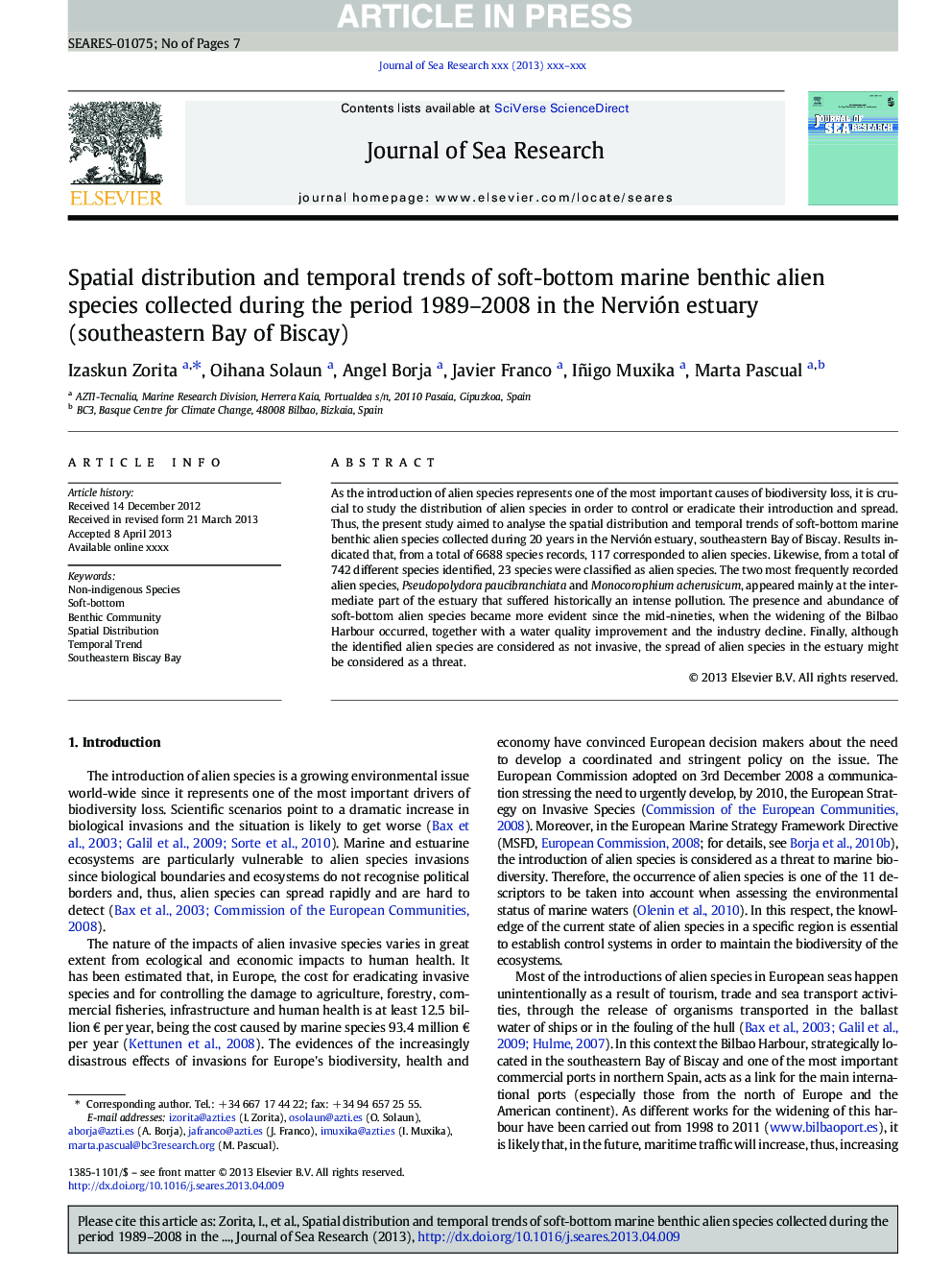| Article ID | Journal | Published Year | Pages | File Type |
|---|---|---|---|---|
| 6387473 | Journal of Sea Research | 2013 | 7 Pages |
Abstract
As the introduction of alien species represents one of the most important causes of biodiversity loss, it is crucial to study the distribution of alien species in order to control or eradicate their introduction and spread. Thus, the present study aimed to analyse the spatial distribution and temporal trends of soft-bottom marine benthic alien species collected during 20Â years in the Nervión estuary, southeastern Bay of Biscay. Results indicated that, from a total of 6688 species records, 117 corresponded to alien species. Likewise, from a total of 742 different species identified, 23 species were classified as alien species. The two most frequently recorded alien species, Pseudopolydora paucibranchiata and Monocorophium acherusicum, appeared mainly at the intermediate part of the estuary that suffered historically an intense pollution. The presence and abundance of soft-bottom alien species became more evident since the mid-nineties, when the widening of the Bilbao Harbour occurred, together with a water quality improvement and the industry decline. Finally, although the identified alien species are considered as not invasive, the spread of alien species in the estuary might be considered as a threat.
Related Topics
Physical Sciences and Engineering
Earth and Planetary Sciences
Oceanography
Authors
Izaskun Zorita, Oihana Solaun, Angel Borja, Javier Franco, Iñigo Muxika, Marta Pascual,
